Do you ever think about how the methods of preparing your food affect the nutrients in that food?
It is rather an overwhelming topic so I don’t blame you if you don’t.
But I wanted to highlight some superfoods that have been studied enough for us to have some good information on what is probably the ideal way to prepare them in order to preserve the most nutrients.
And those superfoods are:
- Onions
- Garlic
- Cruciferous Veggies
- Tomatoes & Carrots
- Extra Virgin Olive Oil
- Nuts
I will go through the benefits of each of these foods and some quick tips on the best way to prepare them. If you want to know more about why, please refer to the studies I have linked to. I wanted to keep this quick and easy to read.
Many of you know I always talk about “polyphenols”.
Polyphenols are phytonutrients that are present only in plant foods. There are over 8,000 of them and we have only just begun to scratch the surface of their benefits. How we prepare the food will either enhance or decrease the polyphenols so knowing this info can help you boost the nutrition in your daily life.
You don’t have to be perfect with this stuff. Just do the best you can.
But at least knowing the best way to prepare these superfoods will give you an edge so when you CAN do it the right way, then do it. When you can’t, let it go.
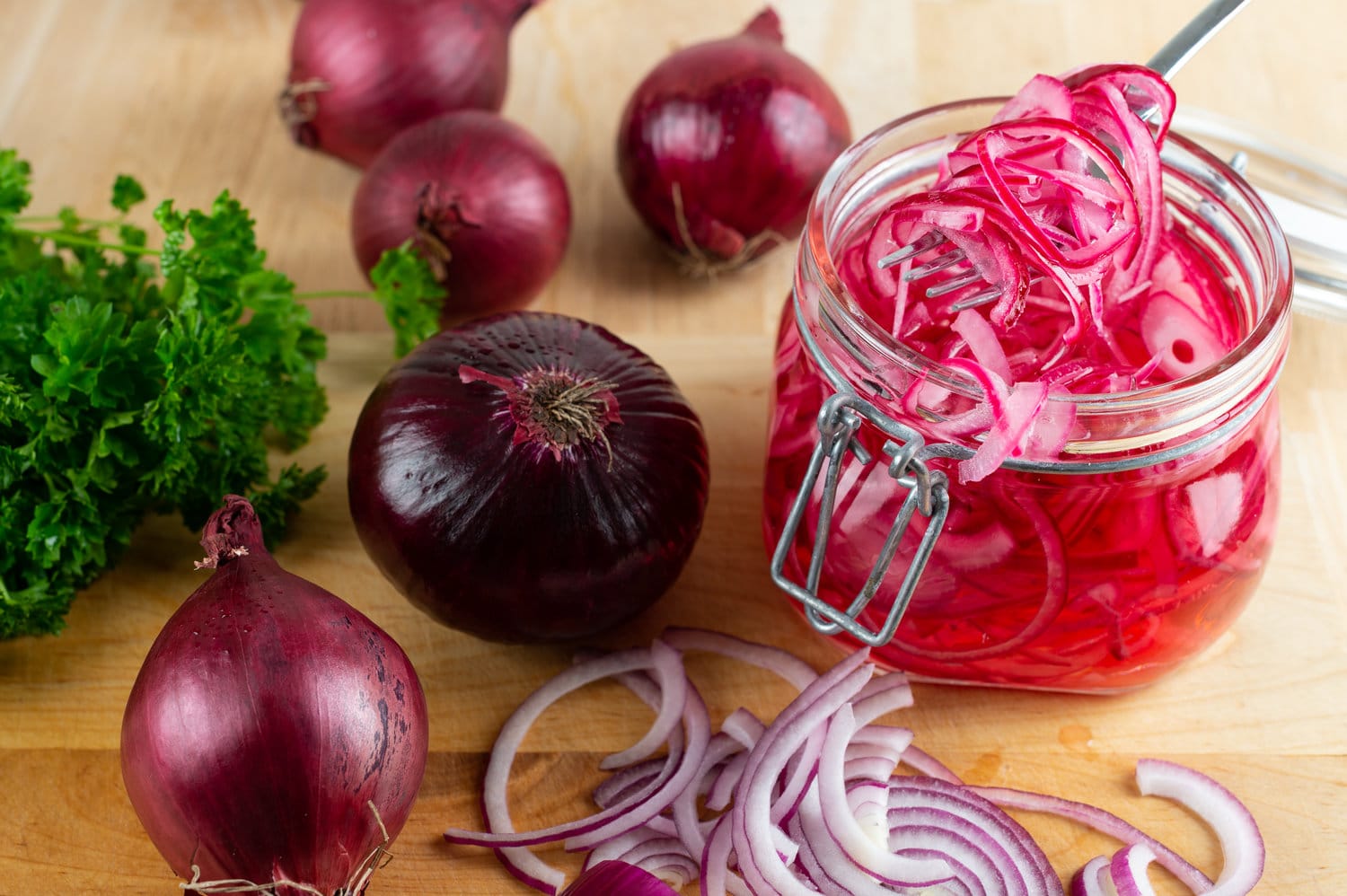
Onions
Active Nutrients:
Polyphenols: Quercetin and Kaempferol Glucosides (1)
Benefits:
Antioxidant and anti-inflammatory (2,3) and decreased risk for certain forms of cancer. (4)
Best Way to Prepare:
Onions are best eaten raw. Heating reduces the phytonutrients. If you must cook onions then cook them for less than 5 minutes to retain as much nutrition as possible. Heating for over 10 minutes destroys most of the benefits. (1)
I personally do not like raw onions. My workaround has been to soak them in apple cider vinegar and red wine vinegar for 15 minutes or more. I do not have research to show that the vinegar retains the phytonutrients but I figure it’s probably better than cooking and oh how do I love those pickled onions!
As I said, do the best you can.
Garlic
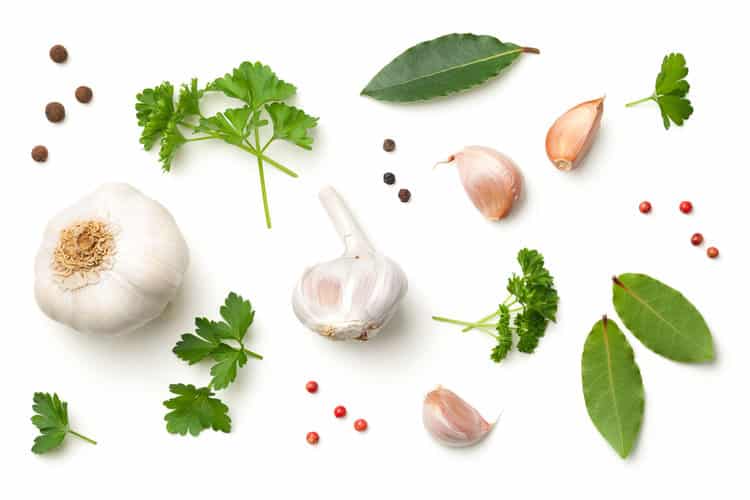
Active Nutrients:
Polyphenols: Thiosulfinates (allicin) and myricetin glucosides (1)
Benefits:
Decreased risk for certain forms of cancer, including lung cancer and gastric cancer. (4,5,6)
Best Way to Prepare:
Reduced risk for cardiovascular disease (7)
Garlic is best eaten raw. If you do cook it, make sure to crush it first and let it sit for about 10 minutes before cooking. This will increase an enzyme that makes the phytonutrients more potent. (1)
Cruciferous Veggies
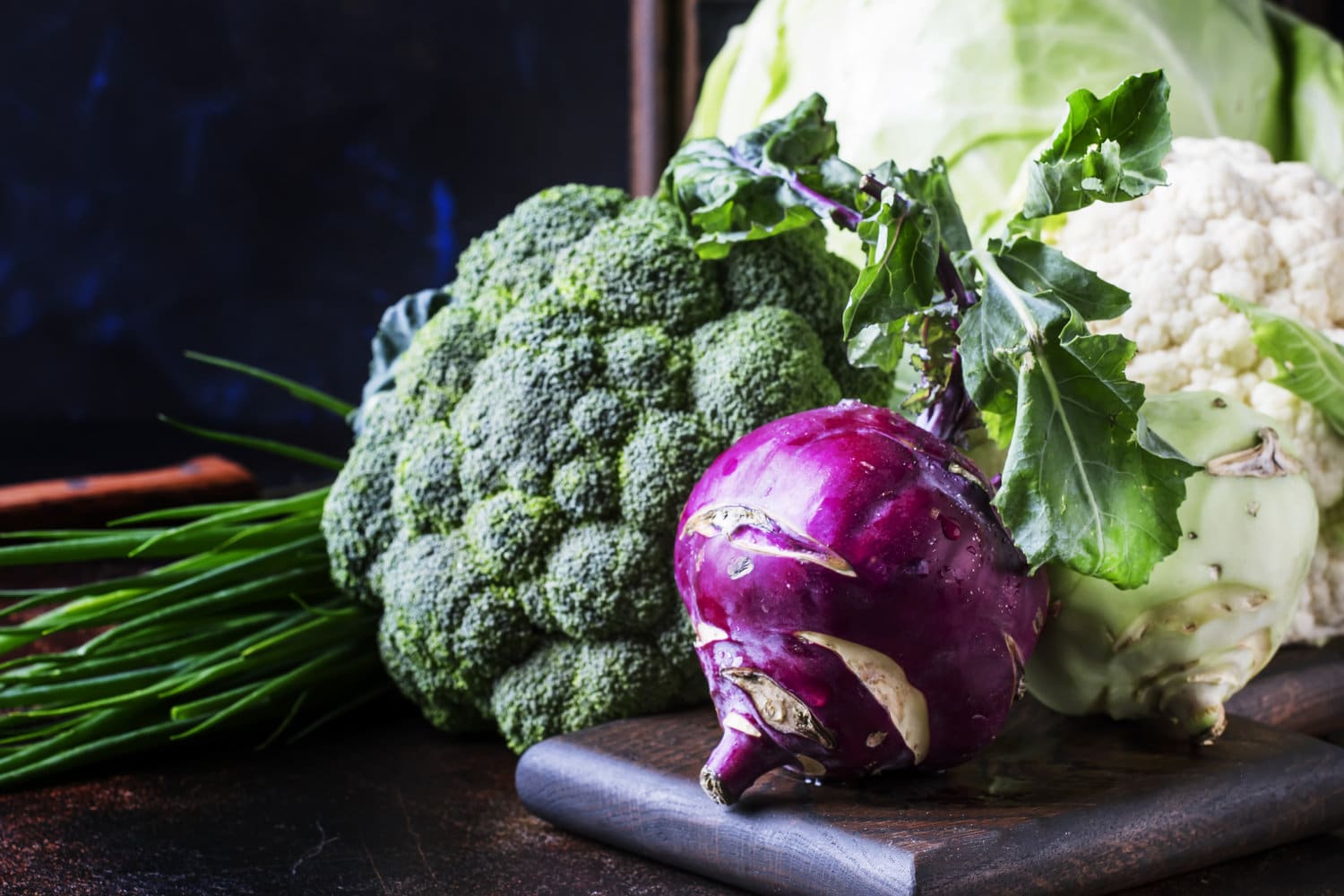
Active Nutrients:
Polyphenols, carotenoids, tocopherols and vitamin C
In particular, the polyphenols called “glucosinolates” (GSLs), one of which gets broken down to sulforaphane (which some of you may have heard of).
Benefits:
Anti-carcinogenic, cell-protective, antioxidant, detoxifying (8,9)
May protect against neuro-degeneration (10)
May protect against breast cancer (11,12) and possibly gastric cancer (13)
Best Way to Prepare:
It is best to eat cruciferous veggies raw in terms of getting the GSLs because the raw food contains enzymes that convert the GSLs to the active forms. (1) An example of some cruciferous veggies you may WANT to eat raw are arugula, cabbage, kohlrabi, kale, watercress, horseradish, wasabi, daikon, and red radish.
Other cruciferous veggies are most palatable eaten cooked. But the good news is that if you eat the juices from the cooked veggies you will be getting more of the nutrients than if you discard the water. (1)
So including cruciferous veggies in soups and stews is a great way to eat them. For example cooking broccoli, cauliflower, kale, Brussel sprouts, turnips, bok choy, rutabaga, cabbage, tatsoi or komatsuna in a soup or stew will give you more benefit over roasting or grilling them without retaining the juices. (1)
Tomatoes & Carrots
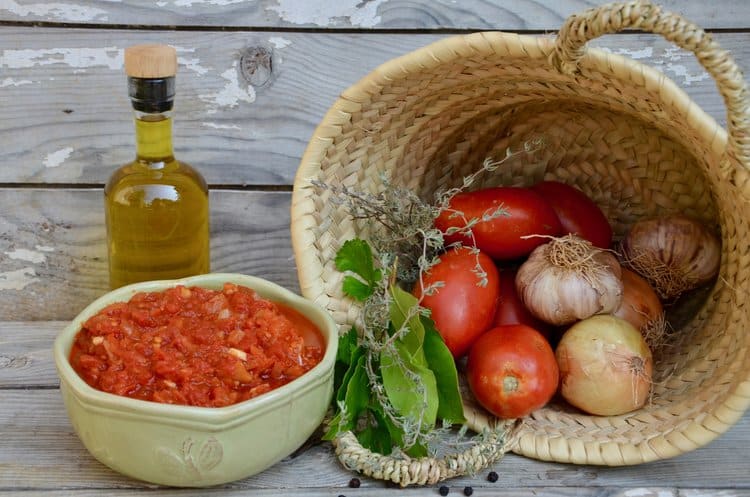
Active Nutrients:
Carotenoids (α-carotene, β-carotene, lycopene, β-cryptoxanthin, zeaxanthin and lutein), Vitamin C
Benefits:
Antioxidant and anti-inflammatory (14)
Anti-carcinogenic (15)
May reduce total cholesterol and LDL cholesterol (when tomatoes are consumed with olive oil) (16)
Best Way to Prepare:
Unlike the other foods listed so far, carrots and tomatoes are most likely more beneficial after processing and cooking. In addition, the carotenoids in these foods are further enhanced when they are consumed with olive oil (as opposed to with other oils or with no oil). Stewing has been shown to increase carotenoids by 36%. Other forms of cooking were not as effective but still increased the carotenoids. (1)
If you eat tomatoes raw you will still get the vitamin C but it looks like cooking tomatoes enhances the overall nutrition content (while reducing or eliminating vitamin C).
Extra Virgin Olive Oil (EVOO)
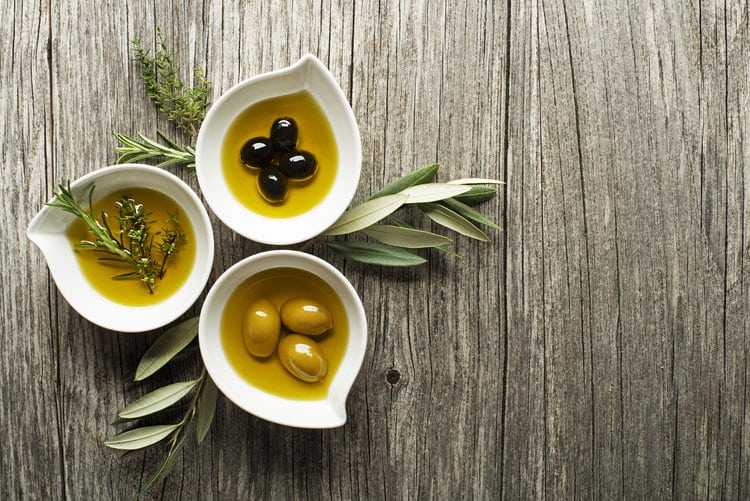
Active Nutrients:
Tocopherols (vitamin E), carotenoids, polyphenols (secoiridoids)
Benefits:
Antioxidant, anti-inflammatory, cardio-protective (improved lipid profiles) (16,17,18)
May protect against certain types of cancer (19,20)
Best Way to Prepare:
Make sure it’s extra virgin!
Consuming raw EVOO will give you the highest amount of polyphenols (and specifically the most cardiovascular protection). So make sure to pour it on salads. Some of the polyphenols are reduced in cooking so using some olive oil at the end of cooking will give you the most benefit. (1)
You could also just add some to your dishes after cooking. So start drizzling a little extra virgin olive oil on your cooked foods.
Another option is to eat olives!
Just avoid the black ones from California or made in the “California processing” style because some studies have found increased levels of acrylamide. This carcinogenic compound increases in the sterilization process used in the California method.
Olives from Spain and Greece that were tested had very low levels of acrylamide so stick to those. (1)
Nuts
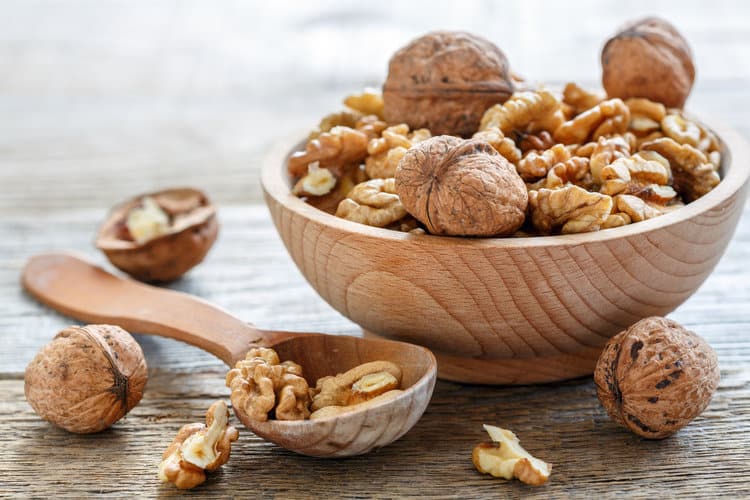
Active Nutrients:
Polyphenols (stilbenes, proanthocyanidins, and hydrolyzable tannins), tocopherols (vitamin E), arginine, and healthy fats and fiber.
Benefits:
Antioxidant, anti-inflammatory. (1) Protective against cardiovascular disease and all-cause mortality (21,22) and diabetes (23)
Best Way to Prepare:
Eat nuts raw as much as you can. Or at least not roasted.
Roasting not only reduces the polyphenols it can also produce the carcinogen acrylamide.
Also, most of the polyphenols are contained in the skin of nuts, so make sure you eat them with the skins. One study showed that eating walnuts without the skins reduced the antioxidant content by 90%, pistachios by 55%, and 36% in hazelnuts. (24)
- Hoffman R., Gerber M. Food Processing and the Mediterranean Diet. Nutrients. 2015;7:7925–7964. doi: 10.3390/nu7095371. [PMC free article] [PubMed] [CrossRef] [Google Scholar]
- Jan A.T., Kamli M.R., Murtaza I., Singh J.B., Ali A., Haq Q. Dietary flavonoid quercetin and associated health benefits: An overview. Food Rev. Int. 2010;26:302–317. doi: 10.1080/87559129.2010.484285. [CrossRef] [Google Scholar]
- Santhosha S.G., Jamuna P., Prabhavathi S.N. Bioactive components of garlic and their physiological role in health maintenance: A review. Food Biosci. 2013;3:59–74. doi: 10.1016/j.fbio.2013.07.001.[CrossRef] [Google Scholar]
- Turati F., Rossi M., Pelucchi C., Levi F., la Vecchia C. Fruit and vegetables and cancer risk: A review of southern European studies. Br. J. Nutr. 2015;113(Suppl. S2):S102–S110. doi: 10.1017/S0007114515000148. [PubMed] [CrossRef] [Google Scholar]
- Jin Z.Y., Wu M., Han R.Q., Zhang X.F., Wang X.S., Liu A.M., Zhou J.Y., Lu Q.Y., Zhang Z.F., Zhao J.K. Raw garlic consumption as a protective factor for lung cancer, a population-based case-control study in a Chinese population. Cancer Prev. Res. (Phila.) 2013;6:711–718. doi: 10.1158/1940-6207.CAPR-13-0015. [PMC free article] [PubMed] [CrossRef] [Google Scholar]
- Zhou Y., Zhuang W., Hu W., Liu G.J., Wu T.X., Wu X.T. Consumption of large amounts of allium vegetables reduces risk for gastric cancer in a meta-analysis. Gastroenterology. 2011;141:80–89. doi: 10.1053/j.gastro.2011.03.057. [PubMed] [CrossRef] [Google Scholar]
- Vazquez-Prieto M.A., Miatello R.M. Organosulfur compounds and cardiovascular disease. Mol. Aspects Med. 2010;31:540–545. doi: 10.1016/j.mam.2010.09.009. [PubMed] [CrossRef] [Google Scholar]
- Guerrero-Beltran C.E., Calderon-Oliver M., Pedraza-Chaverri J., Chirino Y.I. Protective effect of sulforaphane against oxidative stress: Recent advances. Exp. Toxicol. Pathol. 2012;64:503–508. doi: 10.1016/j.etp.2010.11.005. [PubMed] [CrossRef] [Google Scholar
- Dinkova-Kostova A.T., Kostov R.V. Glucosinolates and isothiocyanates in health and disease. Trends Mol. Med. 2012;18:337–347. doi: 10.1016/j.molmed.2012.04.003. [PubMed] [CrossRef] [Google Scholar
- Tarozzi A., Angeloni C., Malaguti M., Morroni F., Hrelia S., Hrelia P. Sulforaphane as a potential protective phytochemical against neurodegenerative diseases. Oxid. Med. Cell. Longev. 2013 doi: 10.1155/2013/415078. [PMC free article] [PubMed] [CrossRef] [Google Scholar]
- Boggs D.A., Palmer J.R., Wise L.A., Spiegelman D., Stampfer M.J., Adams-Campbell L.L., Rosenberg L. Fruit and vegetable intake in relation to risk of breast cancer in the black women’s health study. Am. J. Epidemiol. 2010;172:1268–1279. doi: 10.1093/aje/kwq293. [PMC free article] [PubMed] [CrossRef] [Google Scholar]
- Suzuki R., Iwasaki M., Hara A., Inoue M., Sasazuki S., Sawada N., Yamaji T., Shimazu T., Tsugane S., Japan Public Health Center-Based Prospective Study Group Fruit and vegetable intake and breast cancer risk defined by estrogen and progesterone receptor status: The Japan public health center-based prospective study. Cancer Causes Control. 2013;24:2117–2128. doi: 10.1007/s10552-013-0289-7.[PubMed] [Google Scholar)
- Herr I., Buchler M.W. Dietary constituents of broccoli and other cruciferous vegetables: Implications for prevention and therapy of cancer. Cancer Treat. Rev. 2010;36:377–383. doi: 10.1016/j.ctrv.2010.01.002. [PubMed] [CrossRef] [Google Scholar]
- Ciccone M.M., Cortese F., Gesualdo M., Carbonara S., Zito A., Ricci G., de Pascalis F., Scicchitano P., Riccioni G. Dietary intake of carotenoids and their antioxidant and anti-inflammatory effects in cardiovascular care. Mediat. Inflamm. 2013 doi: 10.1155/2013/782137. [PMC free article] [PubMed] [CrossRef] [Google Scholar]
- Sporn M.B., Liby K.T. Is lycopene an effective agent for preventing prostate cancer? Cancer Prev. Res. (Phila.) 2013;6:384–386. doi: 10.1158/1940-6207.CAPR-13-0026. [PubMed] [CrossRef] [Google Scholar]
- Arranz S., Martinez-Huelamo M., Vallverdu-Queralt A., Valderas-Martinez P., Illan M., Sacanella E., Escribano E., Estruch R., Lamuela-Raventos R.M. Influence of olive oil on carotenoid absorption from tomato juice and effects on postprandial lipemia. Food Chem. 2015;168:203–210. doi: 10.1016/j.foodchem.2014.07.053. [PubMed] [CrossRef] [Google Scholar]
- Buckland G., Gonzalez C.A. The role of olive oil in disease prevention: A focus on the recent epidemiological evidence from cohort studies and dietary intervention trials. Br. J. Nutr. 2015;113(Suppl. S2):S94–S101. doi: 10.1017/S0007114514003936. [PubMed] [CrossRef] [Google Scholar]
- Covas M.I., de la Torre R., Fito M. Virgin olive oil: A key food for cardiovascular risk protection. Br. J. Nutr. 2015;113(Suppl. S2):S19–S28. doi: 10.1017/S0007114515000136. [PubMed] [CrossRef] [Google Scholar]
- Buckland G., Travier N., Barricarte A., Ardanaz E., Moreno-Iribas C., Sanchez M.J., Molina-Montes E., Chirlaque M.D., Huerta J.M., Navarro C., et al. Olive oil intake and CHD in the European prospective investigation into cancer and nutrition spanish cohort. Br. J. Nutr. 2012;108:2075–2082. doi: 10.1017/S000711451200298X. [PubMed] [CrossRef] [Google Scholar]
- Buckland G., Travier N., Agudo A., Fonseca-Nunes A., Navarro C., Lagiou P., Demetriou C., Amiano P., Dorronsoro M., Chirlaque M.D., et al. Olive oil intake and breast cancer risk in the Mediterranean countries of the European prospective investigation into cancer and nutrition study. Int. J. Cancer. 2012;131:2465–2469. doi: 10.1002/ijc.27516. [PubMed] [Google Scholar]
- Luo C., Zhang Y., Ding Y., Shan Z., Chen S., Yu M., Hu F.B., Liu L. Nut consumption and risk of type 2 diabetes, cardiovascular disease, and all-cause mortality: A systematic review and meta-analysis. Am. J. Clin. Nutr. 2014;100:256–269. doi: 10.3945/ajcn.113.076109. [PubMed] [CrossRef] [Google Scholar]
- Afshin A., Micha R., Khatibzadeh S., Mozaffarian D. Consumption of nuts and legumes and risk of incident ischemic heart disease, stroke, and diabetes: A systematic review and meta-analysis. Am. J. Clin. Nutr. 2014;100:278–288. doi: 10.3945/ajcn.113.076901. [PMC free article] [PubMed] [CrossRef] [Google Scholar]
- Ros E. Nuts and CVD. Br. J. Nutr. 2015;113(Suppl. S2):S111–S120. doi: 10.1017/S0007114514003924. [PubMed] [CrossRef] [Google Scholar]
- Arcan I., Yemenicioglu A. Antioxidant activity and phenolic content of fresh and dry nuts with or without seed coat. J. Food Compos. Anal. 2009;22:184–188. doi: 10.1016/j.jfca.2008.10.016. [CrossRef] [Google Scholar]
